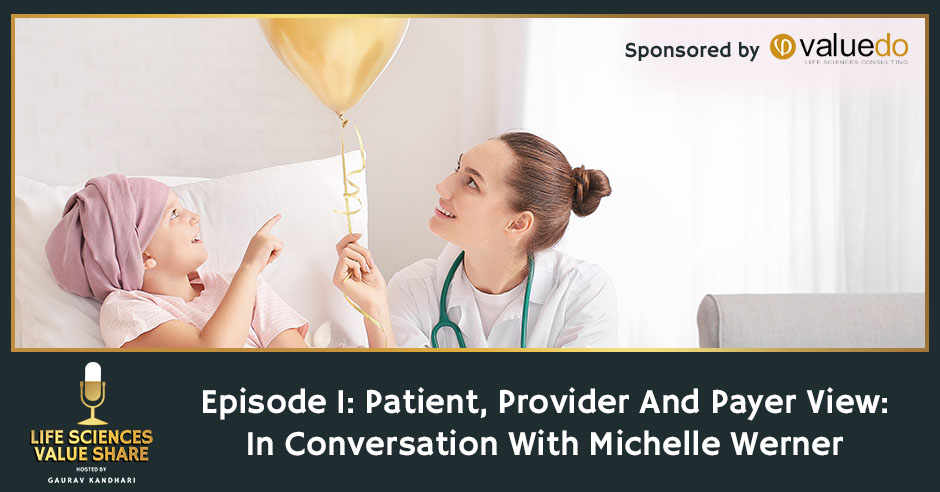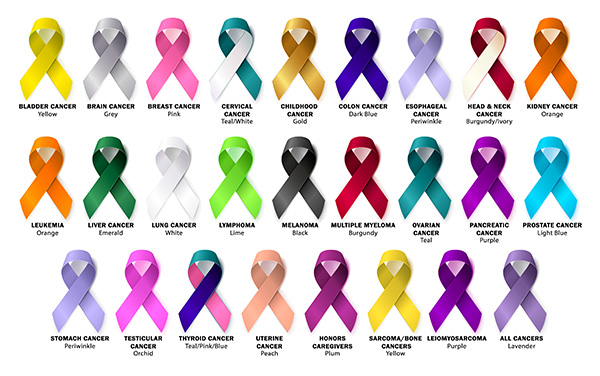
The demands of the healthcare system are ever-increasing because of evolving diseases and medications. The oncology commercial sector must also undergo changes if it hopes to cope with such significant shifts. In this first part of a series, Gaurav Kandhari taps industry leader and pharma executive Michelle Werner to talk about the right way to educate patients regarding their illnesses to avoid the overwhelming feeling of information overload. She explains how multidisciplinary teams and the pharmaceutical industry can work together to make such educational campaigns properly constructed. Michelle also acknowledges the huge part that digital platforms in this endeavor, allowing information to be disseminated as fast as possible through social media.
—
Watch the episode here
Listen to the podcast here
Patient, Provider And Payer View: In Conversation With Michelle Werner
I’m excited to have an industry leader and a close friend on the show. She’s a former executive with experience in a variety of positions in the US, ex-US and global, both in the R&D and the commercial side of the organization. Her predominant focus has been oncology and immuno-oncology. I’ve had the privilege of working with her and helping her stand an oncology organization and working on launching brands and doing strategy and operational exercises for her and her team. A warm welcome to Michelle Werner. Welcome. Thanks for taking the time.
It’s a real pleasure to be here with you.
Thank you. How do you feel?
I feel great. I’m excited to be here.
Michelle and I will kick off the discussion on the topic evolving the world of oncology and how life sciences companies can be more agile and effective in launching oncology drugs and shaping the oncology business organizations and business units better. We plan to cover this topic in three episodes starting with an overview on the topic, getting into the patient, HCP, and payer perspective around the topic, and then getting close and more inward into how oncology business units are led and managed. Finally, getting into a third episode around the go-to-market approaches. Michelle, any thoughts before we dive in?
This is an exciting topic. Having done a multitude of launches over the years that I’ve been in this industry, I’ve seen it evolve during this time. There are great lessons learned from these experiences but also opportunities for us to do more for patients, our physicians that we partner with, and to help ready organizations to prepare. This will be fun.
You read my mind. I’m excited. Let’s jump in. Michelle, tell us a bit about your oncology journey. How do you feel the oncology world has evolved over the years on HCP, patient and life sciences organizations?
It can be too overwhelming to be diagnosed with an illness. Giving too much information to patients is never the best approach.
There’s been a great number of changes over the years. We used to be in a world where oncology launches were relatively few and far between. First in class always meant best in class and maybe only in class. We’re now in an environment where that’s no longer the case. I call this the golden age of innovation in oncology. We’re seeing many more medicines that are being approved off of limited data sets and getting accelerated approvals. We’re also seeing extremely robust lifecycle management plans, which means that you’re constantly in a state of launch with many of these medicines.
You may have brought the first indication to the market when you are turning around and starting to prepare for your next and a new launch is around the corner. That adds a lot of excitement, first and foremost, for patients who might be able to benefit from the innovations but then also some complexity in terms of how do you prepare? How do you get ready from an external perspective? Also, how do you get ready from an internal perspective? Times are different than it was when I first started in this field. I also think that complexity brings a lot of excitement as well and that’s why I do what I do every day.
You provided a great overview of the entire topic. I love the way you phrased it, the constant state of launch and what it means for the patient. Let’s try to cover that aspect of the topic. What does it mean for the patient and subsequently for the HCP or the payer?
One of the great things about having a choice is you have many options. There’s not necessarily one single best way to be able to address the mass numbers of patients with a particular type of cancer. We’re in a world where we have many more targeted therapies. It’s important for us to understand whether or not there are any specific characteristics about a patient’s cancer that might lead the patient down one journey versus another journey.
We have this responsibility to make sure that there’s a good level of education and support to navigate the key questions, some difficult questions that any person goes through when they’re initially diagnosed with a specific type of cancer. Many things go through a patient’s head, in particular. Oftentimes, what we’re hearing is a patient sits there in the doctor’s office or gets that phone call that nobody ever wants to get. You hear one thing, that they have cancer but they don’t hear anything else.
All of us, our minds can race to a million different places, most of which are probably not good. For us, what is important and how I think about things is what’s the support that we should be giving patients to be able to make sure that they get the right information, they can be well informed about what their options are. They’re on being a thought partner with their doctor and not being a recipient of news and a plan that they don’t play a role on. That’s how it was years ago, you just did whatever your doctor told you to do.

Now, we’re in a different world where patients are much more hands-on and much more involved. With that, they need to be more informed and they want to be informed and engaged. We have a responsibility to help make sure that they get the best information and the most current information there is. I will also say it comes with a flip side. It’s an overwhelming time. Giving too much information also is not the best approach. It’s striking the right balance where they have enough so that they can engage in a dialogue and be informed but not too much where they don’t even know where to start.
Tell us more about that. I agree with the first side where things have evolved. The internet has taken over. Everybody has information at their fingertips. I was reading this somewhere, “Patients are drinking right from the firehose.” It applies well here. There’s so much information, digital content and many credible sites, but they do not all tell the same story. I’ve been a caregiver myself to a cancer patient. When you were talking about the cancer patient sitting in the lobby, I’ve been there being a caregiver. I realize how quickly you get overwhelmed even when you know this space well. Tell us any stories that you want to share, any experiences you want to share as to how you streamline that experience for a patient when you taught either at the unbranded level or the branded level? There was too much information that we were throwing at the patient and the caregiver. We had to crystallize that story a bit to do justice to that point. Any thoughts? Any stories?
Maybe not so much of a story but a lesson. All of us who have been in this industry for some time can fall into the trap of, “We know things best because we’re living it every day. Therefore, all the content that we’re going to create is going to be the best that a patient will have access to.” In some ways, some of that is true. In other ways, I’m not sure. One of the things that I would say from a lesson perspective that I’ve learned over time is that even as a representative of the pharmaceutical industry, I’m not sure if getting content directly from us necessarily is the right approach.
Going to working and partnering with trusted sources like patient advocacy groups is the best way to use that as a channel in which information can be disseminated. This is where the patients are going anyway. Not only are they looking for information about the available treatment options but they’re also looking for information like, “What’s the process look like? What do they need to do to get diagnosed? Are there other options that are not interventional in nature?” The holistic approach is what’s required at this time. Patients are thinking about many different things, “Will I be able to continue working? Is this going to have an impact on my financial situation?” There are lots of different things.
For me, it’s about how can we best partner with the groups who are already well-established with these groups of patients who already know. These are the things that patients need to hear. This is the type of language that helps them understand and appreciate the information as best as they possibly can. It also gives them the opportunity to connect with other people who have similar experiences, which is different. You talked about your own experience as a caregiver and that means a lot to patients and families when they’re in these situations.
In my personal experiences as a caregiver, not to a cancer patient but for somebody with a rare condition, this is exactly what you need. You need to talk to other families who are going through something similar to know that it’s okay, what you’re doing is right, there are options, there’s reason to have hope, to believe, and for them to be optimistic about what the outcomes are going to be. The real lesson is don’t try to do everything that you can because you can do it. Think about the right people and organizations that we should be partnering with to make this accessible and approachable for the people who truly matter. In this case, we’re talking about the patients.
Don’t try to do everything that you can just because you can do it.
That’s helpful. It takes me back a few years. You evolved the patient side of the organization to a different level. It was not just content but the mindset of how a pharma company or a life sciences organization should be looking at the patient. You evolved that landscape. Can you talk a little bit more about beyond Patient Association groups, beyond the right stakeholders to get in front of patients, beyond the content? What are a couple of other things that are required to make the process and the journey of the patient easier or streamline?
I would share one story with you. I was working on an asset that was being explored for mesothelioma at one point in my career. One of the things that we recognized about this patient population is quite different than patients who have different broad categories of lung cancer, etc. It’s a relatively uncommon condition. We wanted to go through an experience where we truly understood what the needs were of this patient population. Instead of us doing lots of market research and maybe more conventional insight generation that is typical for a pharmaceutical company, we ended up doing sessions where we would co-create directly with patients.
We brought patients and caregivers of patients with mesothelioma together to work hand-in-hand and side-by-side to understand. We are thinking about entering into this space. We’re interested in what the needs are of you as patients, not just from a treatment perspective but from an overall diagnosis and navigating what the next steps in their lives are. The co-creation directly with them was eye-opening. Things that we went into that conversation ideas that we were brainstorming already entering into those sessions were fundamentally different than what we walked out of the room with.
At some point, you feel like you have the insights that you need to be able to come up with your strategy or come up with your plan. The fact of the matter is you can’t put yourself in the shoes of the patient at all. As much as we think we can, we don’t have that skill. Everything is different. You think about things fundamentally differently. I believe that co-creation has certainly changed the way that I do things. From that moment in time, it was eye-opening that I’ve always incorporated co-creation as part of the way that I and my team approach our content creation.
The other thing that I would say is also quite interesting. As a pharmaceutical sector, generally we get stuck on what we need to do to be thinking about how patients get access to or interact with the medicine that we, as manufacturers, produce. The journey that a patient goes through is far more extensive than when they get a medicine. It’s much more than that. Until you think about what those pain points are in the journey and you need to hear them from patients, you might be missing some major things.
For example, if you’re working on a condition that is a relatively smaller cancer type where it’s maybe not treated by your regular community oncologists, you have to be treated in a center of excellence because that’s where the expertise is. Oftentimes, patients have to drive 3, 4, 5, 6 hours to get to the clinics where they can be seen. If we’re not thinking about that experience or the challenges that maybe that patient might have by thinking about, “How do I get from my house to the place of care?” You’re missing out on a huge piece of the puzzle from a patient perspective. I would like to see us being more thoughtful about what’s the entirety of that experience looks like, what do we have a responsibility for, and where can we make that experience as best as it possibly can be? Not just thinking about the medicine.
We understand that the pharmaceutical sector is a for-profit business. They are doing their best to get the medicines faster to the patients. They have the power. If there is a consortium that thinks of the patient like this, if everybody contributes to that overall holistic experience, it’s life-changing for a patient. I remember as a caregiver, medicine was not even 1% of the body. We knew once we got to the place, if there is availability, we’ll get the medicine.
I was exactly in the same position, we had to drive 2.5 hours to get to the Oncology Center of Excellence versus a clinic or a hospital. That experience is long-lasting for a patient and that is worrisome. The frail patient is not able to take that four-hour journey in a day. Anything that could be done to simplify that or to make the patient and the caregiver a bit more comfortable, that’s powerful.

Let’s talk about maybe the healthcare provider and the payer. I know that they go hand-in-hand. I do not wish to separate it until you feel that we need to talk separately about them. What are the payer and the healthcare perspective around the patient? Specifically, I want to stay close to the topic. Oncology world, how has that evolved? What are things that pharma companies and life sciences organizations need to do?
Let’s think about clinicians first, for me, it’s one of the things that I’ve recognized as evolving over time. We talked about this constant state of launch in oncology. With robust lifecycle management plans having multiple maybe new indications, it’s going into second-line and moving into first-line and going into one tumor type but then being able to be used in another tumor type. It’s all happening in a short period of time.
You talk about what’s overwhelming. At least one patient has one diagnosis and that’s what they can focus on. If you’re an oncologist in this day and age, especially a general oncologist where you treat patients with many different types of cancer, this is tough. As quickly as medicines come to market, as new approvals come out, it’s almost as if it’s outdated or obsolete data. There’s something new to be thinking about new data sets, new information. The standard of care is in a constant state of evolution. It’s tough to keep up with that.
One of the things that are important for us to be thoughtful of as a pharmaceutical sector is what can we do? What’s our responsibility that we have to make the information as easy to access as possible, as easy to digest as possible, and that physicians have it at their fingertips? We need to be able to have the information they need at the right time, at the right place, at the point of care for a patient so that they don’t have to retain 100% of the knowledge at all times. Like all of us, they’re human beings. Us, as human beings, we only have a certain capacity to retain knowledge and information. For me, it’s been important to think about, “What do we need to do to change the way it is that we interact with our customers so that they’re not overwhelmed by all of the data but that it is simple and easy to understand. They know exactly where to access it when they need to and then can use it to make the appropriate informed choices on behalf of their patients.”
Let’s dig a bit deeper. Any good examples or stories that come to mind where we have improved on that experience? I agree that it’s not only the cancer therapies. The cancer therapies have got 6 or 7 different categories. There are targeted therapies. We are talking about general oncologists but it’s multifold, this entire journey for clinicians and the referral pathways and all of that. Any interesting stories that come to mind where you felt you move the needle there, where you help a clinician or you saw a company or an effort that was done that move the needle on that front?
Social media channels are becoming the number one source of information and support for patients.
One of the evolutions that we’ve seen within the treatment landscape over the last decade or so, which has come as a result in particular because of this constant state of evolution of launches and data in the oncology space is the role of the multidisciplinary team. Especially in the oncology practice where less frequently, it’s one medicine, one disease. It’s multiple medicines, maybe multiple modalities used in combination with each other to treat a particular condition. The multidisciplinary team had to come together to make sure that the patients have the opportunity to have the input by all the different specialties and disciplines at the same time.
I do think that we as an industry have helped these multidisciplinary teams come together, especially when you’re talking about combinations of chemotherapy with radiotherapy. Immunotherapy is in combination with chemotherapy and radiotherapy. This had to happen because we needed to have the multidisciplinary teams chart for a patient from the beginning and all the way to thinking through what the multiple lines of therapy might be as a patient navigates through that journey. I would say that has fundamentally changed the way the patients are being treated now than perhaps that they’ve had to before.
When your patient case is being discussed by the multidisciplinary team, going back to the same challenge of, “How do you stay on top of all the information and the content?” The multidisciplinary team has that shared responsibility. When you have multiple people who are the expert in a specific area and can provide input into that decision, the burden or the responsibility on anyone oncologist is less. We’ve got a team of practitioners who are working together to make sure that the patients have the best options made available.
Going one level below, what do you think are the implementation challenges to executing on a good multidisciplinary team and the objectives and goals that are truly beneficial to the clinician and the patient? What are some of the challenges that you’ve either faced yourself or seen implementing through a multidisciplinary team?
The multidisciplinary team in and of itself has had various levels of success and implementation in different parts of the world. We’ve seen great utilization of multidisciplinary teams in the United States. We see that in some other countries outside of the US but it’s not universally been adoptive. Some of the big challenges perhaps have been getting these up and running, working with the institutions, getting them to understand the value and the benefit of thinking differently about how they approach patients.
It also means that, in some ways, you move slightly away from individualized patient care and the decision to clustering or grouping patients together, so that there’s a special clinic where types of patients are being seen at one time. Therefore, the multidisciplinary team that specializes in that type of patient can discuss that whole workload at one time. That means different things in terms of the way that patients are scheduled in the clinic and when they come in for their appointments. That has changed, even the practices and institutions think about how do they need to organize themselves. What are the administrative changes that they need to make on their end to be ready for this type of approach, which could be quite different?

Nowadays, you frequently can be going into a clinic as a patient on a specific day and they have a similar diagnosis as you because those are the days that they say, “We’re going to do our immunotherapy infusions on this particular day. We’re going to have our lung cancer clinics on this particular day.” That means they can organize all the physicians that are necessary to be there for those patients at those moments in time in a different way. That’s great in some ways because then at least you feel, from a patient perspective like you’re part of a group, you’re part of a team. You’ve got a team that’s supporting you. You also have a lot of fellow patients who are going through something similar. I’ve personally been in many oncology clinics over the course of my career. It’s quite inspiring and motivating when you’re in the clinic with patients and the patients are speaking to each other as friends and as comrades and having that support system even while they might be receiving their infusion. That’s been great to see over the course of my time here in this space.
There are a couple of other things that come to mind. How does the life sciences organization and oncology business unit in a pharma organization overlay this entire clinician journey on top of the patient journey to make sure that all these gaps that are identified on the patient journey can be overlaid by what a multidisciplinary team could help with? That is where some of these a-ha moments can be created. We have found something that is truly a value to not even the clinician but also the patient. There’s one more thing that comes to mind when you were talking about that experience of patient communities. We will talk about this in the other episode on how to make the OBU more agile. What is the role of digital or specifically social media being in those patient communities? Do you think they are adding value or they are not that relevant to our industry?
They’re adding value, big time. Quite frankly, social media channels are probably becoming the number one source of information and support for patients. As a caregiver for somebody with a rare condition, that’s exactly where I’m going to find other parents like myself and to find information about other people’s experiences with this condition. We see the same thing in the oncology space. This has changed dramatically in the past years. Since we’ve been living under the COVID-19 pandemic, this has exponentially grown even more. The digital channel is going to become the primary place for information. It certainly is becoming that way as well.
When I think about the importance for us to make data and information easy to access and easy to digest, the digital channel is the number one place where we have to get it right. That’s what is going to be leveraged at that moment during the point of care. For me, this has become a much clearer focus. From the pharmaceutical industry, what we need to be doing is to make sure that we, quite frankly, are staying relevant, relevant for our customers, and relevant for patients as well.
Listen more, talk less, and we can do better things together.
Let’s quickly talk about the payer side. How has that evolved over a decade? Any thoughts?
It certainly has evolved. A lot of this has happened with the golden age of innovation within oncology. We’ve been in a world where we’ve had access to lots of chemotherapies. Unfortunately, there wasn’t a lot of innovation for an extended period of time. Chemotherapy was pretty much it for the vast majority of patients. Fortunately, that’s changed. There’s been the introduction of many small molecules, many targeted therapies. From a payer perspective, this introduces some different challenges that we, as an industry, also need to think about addressing. Also, a huge number of biologics, especially immunotherapy, are being introduced. The way that these medicines and how practices plan for them, how they can afford them, the payment models that are used to reimburse both patients for out-of-pocket costs but also clinicians for the cost that they carry on their end is fundamentally different. They’ve become much more complex.
From a practice perspective, we’re seeing a huge burden put on practices to get pre-authorizations for medicines to get reimbursed. That adds a huge administrative load to those practices. Every time that physicians or practices are focused on trying to overcome the payer challenges or the reimbursement challenges, it takes away time that they have to be treating patients or staying up to speed and current on what’s happening in that area. For us, as an industry, this has also changed the way that we’re thinking about, “What do we need to do to prepare to make sure that there’s coverage in the US where it needs to get coverage? We’re generating the data that’s needed to support government reimbursement in those countries outside of the US.”
We’re thinking about a whole different way of the role of real-world evidence, the role of patient-reported outcomes. How do we need to leverage all of that information to build a strong and robust value story for medicine? We’ll probably talk about this in some of the subsequent sessions. It’s influenced a lot about how we organize ourselves as a company to think about what are the teams and the structures that we need to be putting in place to be able to prepare for the increasing needs that there are from a payer perspective.

It’s also changing the way in which we’re thinking, “What’s the data package that’s necessary to make sure that there are no hurdles that get in the way of having patients being able to access medicines?” It’s not the same anymore where you’re able to do registration in all clinical trials and that would be sufficient. The medicine will get approved by the health authorities and the medicine will get reimbursed. It’s not that easy anymore. In some ways, that’s a good thing because it’s making us more thorough and robust in our planning. It’s also making sure that we’re continuously generating data and information to support why these innovations are important for patients.
The back-end story within a pharma organization has evolved a lot as well, the focus, effort, resources that pharma organizations are putting in standing up these patient access and reimbursement organizations to support the patients. Be it the size of the call center, be it the streamlining of the content and the conversation that is happening with payers and with patients is walled multi-folds as well. From being a small group, which is a formality, to becoming a strong arm of a pharma organization, that is where the true value to the patient and payer lives. If you can streamline that process, we know about the paperwork. The paper trail, the bureaucracy, if you can simplify it for the patients and the payers, it’s a win-win for everybody. The patient gets the right drug in time and gets the reimbursement. It’s as simple as that. Achieve the key goals.
This has been a great conversation, Michelle. We did justice to the first aspect of the topic. We spoke about how the oncology world has evolved and what does it mean to the patient, clinician and the payer, and a few nuggets about how pharma companies are and could do better to serve these three audiences and customers better. Any a-ha moment that comes to mind from your entire oncology journey? It does not have to be super relevant to this topic. From an evolution perspective, any a-ha moment that changed how you started thinking or you at least changed the course? Anything that comes to mind?
What it comes down to is maybe something that I alluded to earlier in our chat. Sometimes we can fall into the trap of thinking that we’re the experts here. The fact of the matter is that we’re not. The faster we get to a place where we realize that we’re not the experts in the room, the better it is or the easier it is that we’re going to be able to add value. We start doing a little bit more listening. To me, this has been the biggest lesson, listen more, talk less, and then we’ll be able to do better things together.
That’s a nice way to close, Michelle. This is the first of three episodes. In the following episode, we are going to speak to Michelle about the inward view. How should the oncology business unit operate? What can an organization do to be a bit more agile and a bit more streamlined? How can we learn from the multiple launches and the indications and the constant state of launch that Michelle referred to? Thank you, Michelle, for joining.
Thanks, it was a pleasure. I’ll look forward to the next time.
Thank you. Have a good one.
Important Links
About Michelle Werner
 Industry leader and a close friend. She is a pharma executive with >20 years of experience in a variety of positions including US, ex US, and global R&D and commercial with predominant focus in Oncology.
Industry leader and a close friend. She is a pharma executive with >20 years of experience in a variety of positions including US, ex US, and global R&D and commercial with predominant focus in Oncology.
I have had the pleasure to partner with her in helping her stand up a US Immuno Oncology org, launch brands and do interesting strategy and operational excellence work together.
